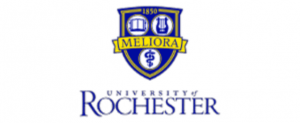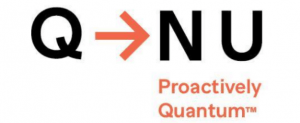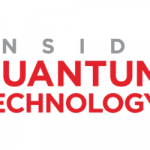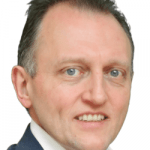Quantum News Briefs February 27: LuxQuanta launches commercial quantum CV-QKD system for networks; University of Rochester scientists develop method that overcomes the limitations of electron spin resonance; Dr. William Zeng awarded $100,000 O’Shaughnessy Fellowship $100,000 grant to pursue open-source quantum computing + MORE

Quantum News Briefs February 27: LuxQuanta launches commercial quantum CV-QKD system for networks; University of Rochester scientists develop method that overcomes the limitations of electron spin resonance; Dr. William Zeng awarded $100,000 O’Shaughnessy Fellowship $100,000 grant to pursue open-source quantum computing + MORE.
LuxQuanta launches commercial quantum CV-QKD system for networks
 LuxQuanta has commercially launched its new system, NOVA LQ, a high-performing continuous variable quantum key distribution (CV-QKD) solution for intra-city networks. Quantum News Briefs summarizes.
LuxQuanta has commercially launched its new system, NOVA LQ, a high-performing continuous variable quantum key distribution (CV-QKD) solution for intra-city networks. Quantum News Briefs summarizes.
NOVA LQ is designed to materialise the important benefits of CV-QKD over existing solutions for quantum cryptography, including ease of deployment, reliability, and resiliency, as well as fast secret key generation.
Established in May 2021, LuxQuanta spun out from ICFO – the Institute of Photonic Sciences, Spain, in May 2021 with the goal of integrating advanced and secure quantum cryptography technologies into conventional communication infrastructures. Its technology is based on research conducted in the Optoelectronics group led by ICREA Professor Dr Valerio Pruneri, a founding member of the company. Drs Sebastian Etcheverry and Saeed Ghasemi, co-founders of the company, contributed to the development of quantum key distribution prototypes during their time as postdoctoral researchers in the group.
LuxQuanta says that it has also made significant progress in removing the limitations of CV-QKD error correction, developing a robust error correction technology that can dynamically adapt to any changes in the optical channel. Processing quantum optical signals to deliver maximum performance within CV-QKD systems can be one of the most challenging tasks to implement for this technology, as the quantum signals can be very weak. However, NOVA LQ is designed to overcome this barrier with sophisticated digital signal processing in real-time for high-precision extraction of quantum signals and system stabilisation. Click here to read complete FiberNews article.
University of Rochester scientists develop method that overcomes the limitations of electron spin resonance
 A team of researchers from the University of Rochester, led by John Nichol, an Associate Professor of Physics, has published a paper in Nature Physics outlining a novel approach for manipulating electron spin in silicon quantum dots. Quantum News Briefs summarizes below.
A team of researchers from the University of Rochester, led by John Nichol, an Associate Professor of Physics, has published a paper in Nature Physics outlining a novel approach for manipulating electron spin in silicon quantum dots. Quantum News Briefs summarizes below.
The nanoscale refers to a length scale that is extremely small, typically on the order of nanometers (nm), which is one billionth of a meter. At this scale, materials and systems exhibit unique properties and behaviors that are different from those observed at larger length scales. Nanoscale phenomena are relevant to many fields, including materials science, chemistry, biology, and physics.
“The results of the study provide a promising new mechanism for coherent control of qubits based on electron spin in semiconductor quantum dots, which could pave the way for the development of a practical silicon-based quantum computer,” Nichol says.
Every electron in a quantum dot has intrinsic magnetism, like a tiny bar magnet. Scientists call this “electron spin”—the magnetic moment associated with each electron. Electron spin is a promising candidate for transferring, storing, and processing information in quantum computing because it offers long coherence times and high gate fidelities and is compatible with advanced semiconductor manufacturing techniques. The coherence time of a qubit is the time before the quantum information is lost due to interactions with a noisy environment; long coherence means a longer time to perform computations. High gate fidelity means that the quantum operation researchers are trying to perform is performed exactly as they want.
One major challenge in using silicon quantum dots as qubits, however, is controlling electron spin.Nichol and his colleagues outline a new method for controlling electron spin in silicon quantum dots that does not rely on oscillating electromagnetic fields. The method is based on a phenomenon called “spin-valley coupling,” which occurs when electrons in silicon quantum dots transition between different spin and valley states. Click here to read the SciTechDaily article describing this research.
Dr. William Zeng awarded $100,000 O’Shaughnessy Fellowship $100,000 grant to pursue open-source quantum computing
O’Shaughnessy Ventures, LLC (“OSV”), a creative investment firm that empowers creators, has announced that it has awarded one of its first two O’Shaughnessy Fellowships to Dr. William Zeng. Quantum News Briefs summarizes below.
Zeng is the founder and President of the Unitary Fund, a non-profit dedicated to developing the quantum ecosystem to benefit the most people. His research focuses on quantum computer architecture, algorithms, and software. He previously led the initial development of Rigetti Computing’s quantum cloud platform and is co-inventor of the Quil quantum instruction language. He received his Ph.D. in quantum algorithms from Oxford University as a Rhodes Scholar and his BSc. in Physics from Yale University. Forbes named him to their Forbes’ ’30 under 30′ list in the Science category for his work on quantum computing.Dr. Zeng will use his fellowship period to study how emerging quantum technologies can explore foundational questions in quantum mechanics. For example, this next generation of experimental tests will probe fundamental aspects of nature by considering what it means for something to be an observation.
O’Shaughnessy Ventures (OSV) is a creative investment firm that empowers and inspires creators to bring their ideas to life. Founded by Jim O’Shaughnessy, a pioneer in quantitative investing, founder of O’Shaughnessy Asset Management, and author of four books on investing, OSV aims to provide financial support and be a partner in building and growing the next life-changing creative idea. OSV combines Jim’s deeply rooted interest in all things art, science, investing, and tech with his long-held desire to establish positive-sum scenarios designed to help promising creators and their inspiring ideas succeed, regardless of age, location, job history, or level of education.
QNu Labs providing digital trust with quantum key distribution & post-quantum cryptography
 Harichandan Arakali, Forbes India Staff, is the author of a February 21 article describing QNu Labs and its quantum key distribution and a post-quantum cryptography software. Quantum News Briefs summarizes.
Harichandan Arakali, Forbes India Staff, is the author of a February 21 article describing QNu Labs and its quantum key distribution and a post-quantum cryptography software. Quantum News Briefs summarizes.
QNu Labs, co-founded by Gupta, Mark Mathias, Anil Prabhakar and Srinivasa Rao Aluri in 2016, set out to solve the problems created by the oncoming convergence of multiple technologies, including 5G wireless, artificial intelligence, robotics, connected vehicles and blockchain,
Online transactions have exploded in India in the last five years, and “In this hyperconnected digital world, trust will be critical,” Gupta says.
QNu Labs works in the area of quantum computing, which involves “qubits” that, unlike the classical computing bits, can have values of either zero or one, can have those values simultaneously or even values in between, in the realms of quantum physics.
QNu Labs’ products include a random number generator—where the numbers can be used to create encryption keys—a quantum key distribution, the company’s flagship, and a post quantum cryptography software.
The products have cybersecurity applications in areas, including finance, health care, data centres, and defence and critical infrastructure. Among its projects for customers, QNu set up a quantum computing lab for the Indian Army.
They are now working on applications that might bring them customers with large user bases and in different industries. For example, “imagine a quantum-secure WhatsApp”, Gupta says. Click here to read Forbes India article in-entirety.
Sandra K. Helsel, Ph.D. has been researching and reporting on frontier technologies since 1990. She has her Ph.D. from the University of Arizona.



















